-
Table of Contents
The Influence of Skate Punk Fashion on Streetwear Trends
Skate punk, a subgenre of punk rock that emerged in the 1980s, has had a significant impact on modern culture. From its rebellious music to its distinctive fashion, skate punk has left an indelible mark on streetwear trends. This article will explore the influence of skate punk fashion on contemporary street style, examining how it has shaped the way we dress and express ourselves.
One of the defining characteristics of skate punk fashion is its emphasis on comfort and functionality. Skateboarders needed clothing that allowed them to move freely and withstand the rigors of their sport. As a result, loose-fitting jeans, oversized t-shirts, and hoodies became staples of skate punk fashion. These relaxed and practical garments have since become synonymous with streetwear, permeating mainstream fashion and influencing the way people dress on a daily basis.
Another key aspect of skate punk fashion is its DIY ethos. Skateboarders often customized their clothing, adding patches, pins, and graffiti-inspired artwork to create a unique and personalized look. This DIY approach to fashion has resonated with many individuals, leading to the rise of the “do-it-yourself” culture in streetwear. Today, it is common to see people customizing their clothes with embroidery, iron-on patches, or screen-printed designs, all inspired by the rebellious spirit of skate punk.
Skate punk fashion also introduced a distinct color palette to streetwear. Bright and bold colors, such as neon greens, pinks, and yellows, became popular among skateboarders, reflecting their vibrant and energetic lifestyle. These eye-catching hues have since become synonymous with streetwear, adding a playful and youthful element to contemporary fashion. Brands like Supreme and Stüssy have embraced this colorful aesthetic, incorporating it into their designs and further solidifying its influence on streetwear trends.
Furthermore, skate punk fashion has played a significant role in breaking down gender norms in clothing. Skateboarding has always been a male-dominated sport, but the fashion associated with it has transcended gender boundaries. Women began adopting skate punk fashion, challenging traditional notions of femininity and embracing a more androgynous style. Baggy jeans, oversized t-shirts, and skate shoes became popular among women, blurring the lines between masculine and feminine fashion. This inclusivity and gender-fluidity in skate punk fashion have had a lasting impact on streetwear, encouraging individuals to express themselves authentically without conforming to societal expectations.
In recent years, skate punk fashion has experienced a resurgence, with many high-end fashion brands incorporating elements of this subculture into their collections. Luxury brands like Gucci and Balenciaga have released skate-inspired clothing and accessories, further blurring the lines between high fashion and streetwear. This mainstream acceptance of skate punk fashion has solidified its influence on modern culture, making it more accessible to a wider audience.
In conclusion, skate punk fashion has had a profound impact on streetwear trends and modern culture as a whole. Its emphasis on comfort, DIY customization, vibrant colors, and gender inclusivity has shaped the way we dress and express ourselves. From the skate parks to the runways, skate punk fashion continues to inspire and influence contemporary fashion, proving that its rebellious spirit is here to stay.
The Evolution of Skate Punk Music and its Impact on Contemporary Music Genres
The Evolution of Skate Punk Music and its Impact on Contemporary Music Genres
Skate punk music, also known as skate rock, emerged in the late 1970s and early 1980s as a subgenre of punk rock. It was heavily influenced by the rebellious and energetic spirit of skateboarding culture, which was gaining popularity at the time. Skate punk music quickly became a soundtrack for skateboarders, with its fast-paced, aggressive sound perfectly complementing the adrenaline-fueled sport.
One of the defining characteristics of skate punk music is its raw and unpolished sound. Unlike mainstream punk rock, which often featured more complex musical arrangements and production techniques, skate punk music embraced a stripped-down approach. The focus was on fast, catchy guitar riffs, pounding drums, and aggressive vocals. This simplicity and intensity resonated with skateboarders, who found in skate punk music a reflection of their own rebellious and non-conformist attitudes.
Skate punk music gained significant popularity in the 1980s, with bands like Black Flag, Bad Religion, and Suicidal Tendencies leading the charge. These bands not only influenced the skateboarding community but also had a profound impact on the broader punk rock scene. Their aggressive sound and DIY ethos inspired countless other punk bands, shaping the direction of punk music for years to come.
As skateboarding continued to grow in popularity, so did skate punk music. In the 1990s, bands like NOFX, Pennywise, and The Offspring brought skate punk to the mainstream with their catchy melodies and anthemic choruses. These bands achieved commercial success without compromising their punk roots, proving that skate punk music could have a wide appeal while staying true to its rebellious spirit.
The influence of skate punk music extends far beyond the punk rock genre. Its fast-paced, aggressive sound has seeped into various contemporary music genres, leaving an indelible mark. In the world of alternative rock, bands like Green Day and Blink-182 have incorporated skate punk elements into their music, blending punk sensibilities with pop hooks. This fusion of styles has helped these bands achieve massive commercial success and reach a broader audience.
Skate punk’s influence can also be felt in the world of metal. Bands like Avenged Sevenfold and Trivium have embraced skate punk’s fast and aggressive sound, infusing it with heavy metal elements to create a unique blend of genres. This crossover has attracted fans from both the punk and metal communities, further blurring the lines between genres.
Even in the realm of hip-hop, skate punk’s influence can be seen. Artists like Machine Gun Kelly and Travis Barker have collaborated on projects that combine hip-hop beats with skate punk-inspired guitar riffs. This fusion of genres has brought skate punk to a whole new audience, introducing its raw energy to fans who may not have been exposed to it otherwise.
In conclusion, skate punk music has had a profound impact on contemporary music genres. Its raw and unpolished sound, born out of the rebellious spirit of skateboarding culture, has influenced punk rock, alternative rock, metal, and even hip-hop. The evolution of skate punk music continues to shape the musical landscape, proving that its energetic and aggressive sound is timeless and transcendent.
Skate Punk’s Role in Shaping Youth Subcultures and Countercultural Movements
Skate punk, a subgenre of punk rock that emerged in the 1980s, has had a profound impact on modern culture. Its energetic and rebellious sound, combined with its DIY ethos, has resonated with youth subcultures and countercultural movements, shaping their identities and influencing their values.
One of the key ways in which skate punk has influenced modern culture is through its role in shaping youth subcultures. Skateboarding, which is closely associated with skate punk, has become more than just a sport; it has become a lifestyle. Skate punk music serves as the soundtrack to this lifestyle, providing a sense of identity and belonging for skateboarders and those who identify with the subculture. The fast-paced and aggressive nature of skate punk music mirrors the adrenaline rush experienced while skateboarding, creating a symbiotic relationship between the music and the sport.
Moreover, skate punk has played a significant role in countercultural movements. The rebellious and anti-establishment nature of the genre has resonated with those who reject mainstream culture and societal norms. Skate punk’s DIY ethos, which encourages self-expression and individuality, has inspired countless individuals to create their own art, music, and fashion. This DIY spirit has also influenced other countercultural movements, such as the graffiti and street art scene, where artists use public spaces as their canvas to express their dissent and challenge the status quo.
Furthermore, skate punk has had a lasting impact on fashion and style. The subculture’s distinctive aesthetic, characterized by baggy clothes, Vans sneakers, and punk-inspired accessories, has become an integral part of streetwear and youth fashion. Brands like Supreme and Thrasher have capitalized on the popularity of skate punk, incorporating its imagery and ethos into their designs. The influence of skate punk can be seen not only in the clothing industry but also in the world of tattoos and body modifications, where skate punk-inspired imagery, such as skulls and flames, are commonly chosen by individuals seeking to express their rebellious spirit.
In addition to its influence on fashion and style, skate punk has also shaped the way we consume media. The subculture’s DIY ethos has led to the creation of independent skateboarding magazines, zines, and videos, which have become important platforms for showcasing underground talent and alternative perspectives. These independent media outlets have provided a space for marginalized voices and have challenged the dominance of mainstream media, allowing skate punk and its associated subcultures to thrive outside of the mainstream.
In conclusion, skate punk has played a significant role in shaping youth subcultures and countercultural movements. Its energetic and rebellious sound, combined with its DIY ethos, has resonated with skateboarders and those who reject mainstream culture. Skate punk’s influence can be seen in fashion, style, media, and even in the way we express ourselves. As skate punk continues to evolve, it will undoubtedly continue to shape modern culture and inspire future generations to embrace their individuality and challenge societal norms.


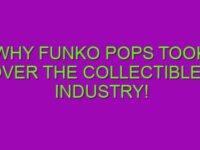
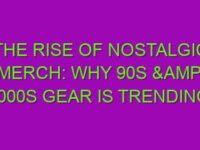
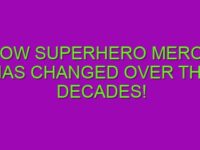
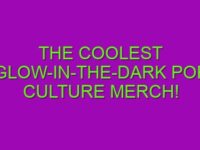
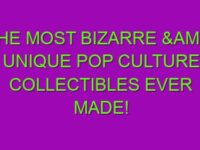

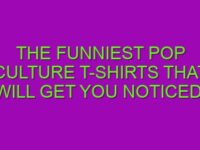


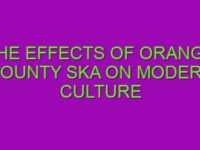







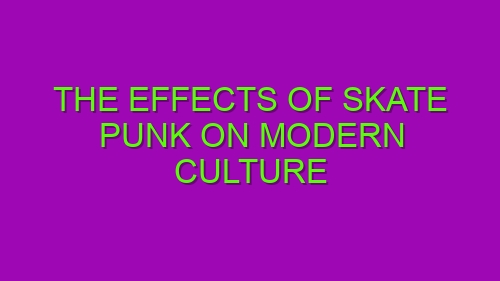
0 Comments